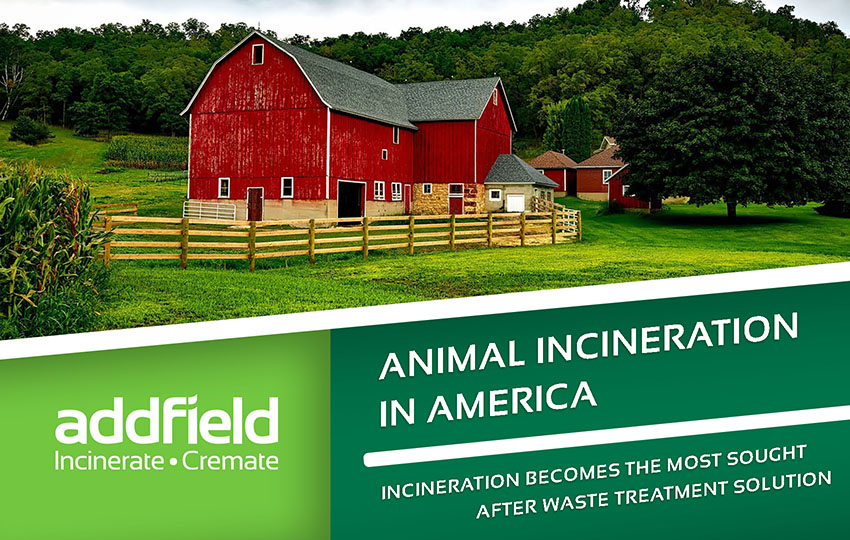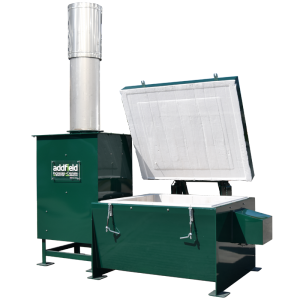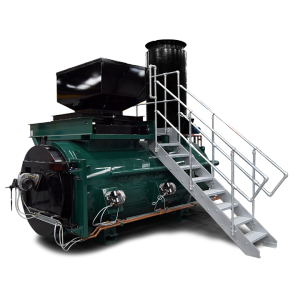
16/10/20
The rising popularity of animal incineration across America

This year has seen a global shift in waste treatment. As the demand for secure disposal of hazardous waste has never been so accepted. While the mainstream media is focusing on the visible impact of the Coronavirus the farming industry across the USA is feeling the effects in an entirely unexpected way.
Agricultural incinerators have always been one of our most popular ranges, in fact since 1982 we have supported farmers worldwide to combat epidemics ranging from Foot and Mouth Disease in the 1980s, BSE in the 1990s, and Bird Flu in the 2000s each disease needing to be addressed quickly and cleanly. Incineration is the most reliable and proven technique to protect biosecurity and livestock.
In fact, 2020 marks the first time for 20 years that the USA has imported Beef from the UK. Ending a ban that was imposed following the last major outbreak of Bovine Spongiform Encephalitis (BSE) in England. As such it should be recognised that the impact from a widely spread biosecurity outbreak can last for years and cost the industry hundreds of millions in lost income.
One of the key lessons we learned from decades of this experience is how to safely dispose of fallen stock and most importantly how not to.
Across the USA this is a message that is beginning to be understood and acted on for a different reason. As the greatest threat to biosecurity to agricultural farmers has turned out also to have been the Coronavirus. Although the risk to animal infection is not a factor it is the impact felt on the economy and the workforce that has been the issue.
A number of the US’s largest slaughterhouses have been heavily impacted and several closing, which has led to a drastic bottleneck and shortage on capacity. Leading to many farmers having to slaughter their animals on the farm itself. Unequipped and without adequate disposal facilities, they are left having to then either bury them in unlined pits or burn them on open-air pyres. Both approaches as you may well know are extremely damaging to the environment and carry a very high risk of spreading diseases.
In the UK and the rest of Europe, these approaches have long been outlawed due to the inherent risks that they pose to the environment and in case of infection and cross-contamination. Due to this factor, many of the farms in this region already have Addfield machines on-site handling their daily waste as well as being able to be called into action in case of a biosecurity emergency.

In America it has already been estimated that by the end of September more than 10 million chickens and 10 million pigs could have been slaughtered and disposed of directly by the farmers. Many farmers lacking the facilities have resorted to one of the earlier mentioned approaches, which are currently in the process of being review to be outlawed for environmental reasons.
Having learned historically the benefits of managing incineration onsite, promptly and cleanly with an Addfield incinerator we stand behind the plans to ban these two outdated and dangerous approaches.
The dangers of insecure disposal.
Unlined pit burial – Through being placed into unlined pits the risks of contaminating the soil and local water table are very high. As the animals decompose, bacterial and fecal matter poses a dramatic threat to the environment and livestock. If any animal is infected with a disease such as African Swine Fever or Avian Flu, the risks of the disease lying dormant before reappearing weeks, months, or even years down the line cannot be underestimated.
Open-air burning.
Long banned in the UK and Europe, open-air incineration is potentially one of the most toxic ways to dispose of any waste, biological or otherwise. As learned during the foot and mouth crisis in the 1980s. Burning infected cattle can speed up the spread of a virus as the temperatures achieved are insufficient to destroy the bacteria. Whilst the act of burning distributes the particles into the atmosphere allowing diseases to spread to farms miles away. Additionally, there are risks to human health burning compounds with proven carcinogenic properties that can lead to reproductive, developmental, and immune system problems in the future.
The law is going to be changing.
Environmental health NGO’s and the public are petitioning the government to formally outlaw these approaches to protect the industry and the local environments.
The petition, filed with the US Department of Agriculture and Animal and Plant Health Inspection Service (USDA-APHIS), on 29 June by NGOs including Center for Biological Diversity, Earthjustice and the Natural Resources Defense Council (NRDC).
In addition to the generally accepted biosecurity risk of culling. Consideration also needs to focus on the manner in which the animals have been slaughtered having a huge impact on the environment.
In the instances of pigs if they are shot and buried there is a risk of lead contamination in the ground. As for poultry one of the most commonly used approaches in the USA is through ‘foaming’. This foam contains Per- and Polyfluoroalkyl substances, or PFAS which are also referred to as ‘forever chemicals’ due to the long-term damage that they can wreak. These chemicals have been linked to various cancers, kidney problems, and suppressed immunity diseases in humans. These are not things that you want to enter the local food chain or becoming airborne pollutants.

The only consistently safe way to dispose of these animals without releasing potentially fatal pathogens or bacteria back into the environment be it airborne or ground-based is appropriate incineration with an Addfield agricultural incinerator.
Addfield is currently working with a number of farmers across the United State to install and commission a selection of machines from our comprehensive agricultural incineration range. Ensure that the most environmentally sustainable approaches to disposing of fallen livestock including pig, poultry, and cattle are established.
To learn more about the Agricultural range of incinerators available from Addfield Click Here
To learn more about the challenges that the US is currently facing due to the Coronavirus and Biosecurity Click Here to read a recent article published in the Guardian
Addfield incinerators are a key factor in maintaining biosecurity on farms worldwide. Click here to learn more about how an onsite incinerator can help combat Avian Flu Outbreaks.
To learn more about the agricultural range of incinerators from Addfield click here.
- British Designed.
British Built. - World leaders in
incineration technology. - Unrivalled build quality
& machine longevity. - Distributed to more
than 140 countries. - Environmentally
Responsible. - Trusted partner with
40 years experience.






